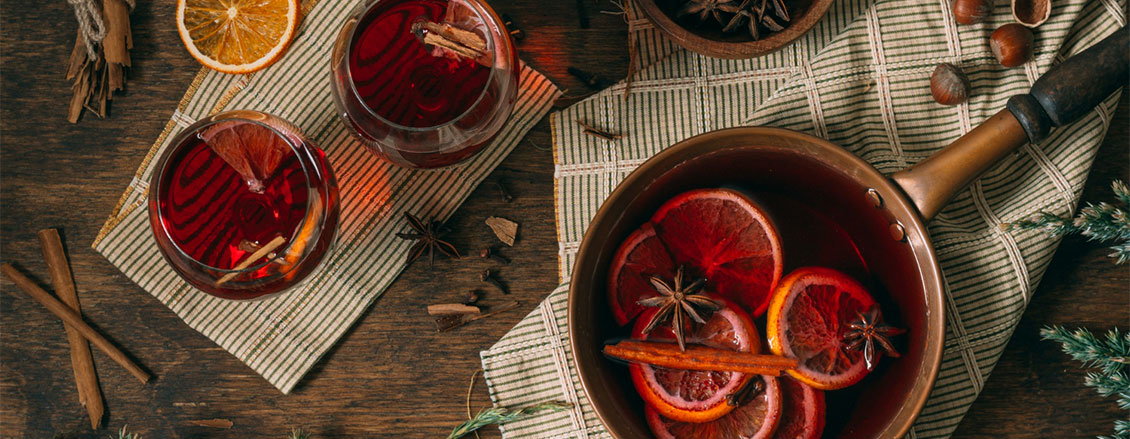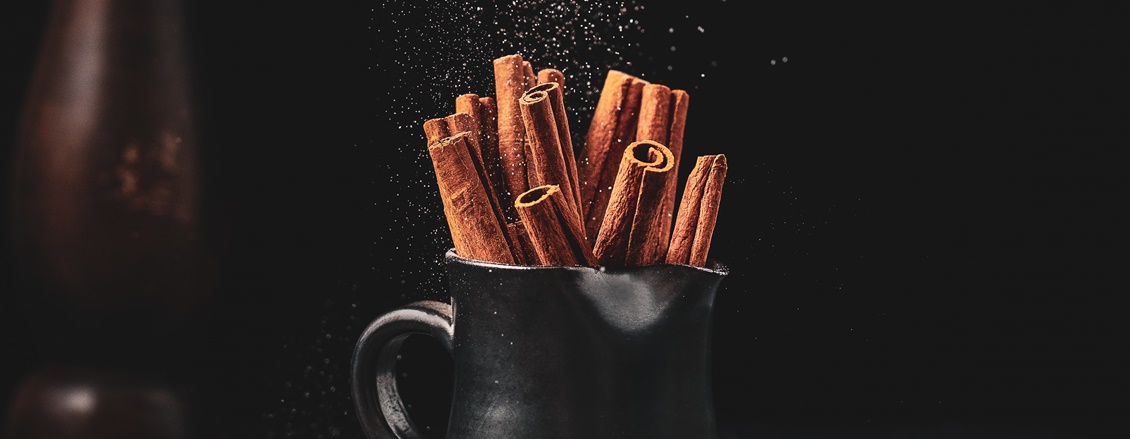The Origins Of Our Favorite Christmas Spices
Spices always had an important place in our cooking. Starting from ancient and medieval times, spices intertwined with medical theories about diet and health overlapping with taste preferences.
Spices always had an important place in our cooking. Starting from ancient and medieval times, spices intertwined with medical theories about diet and health overlapping with taste preferences.

The recipes of classical Greece and Rome favored sharp flavors and strong spices, while those of the Middle Ages resulted in dishes that are sweeter and “perfumed”. These are the ancestors of our favorite Christmas spices.
Colonization of the Americas brought many new spices, but retained a certain affinity for spices through the cuisine of natives – Indian and Mexican cuisine, for example.
Some of this affinity for spices has now spread through culinary globalization, but the time when aromatic and sweet spices reach their peak is around Christmas.
Where did all the now favorite Christmas spices come from, and how to make a perfect, spicy Christmas, FKC discusses in a few next paragraphs.
The history of cinnamon goes back thousands of years. There are records dating back to 2000BC of the ancient Egyptians using it during the embalming process. Medieval doctors used cinnamon in medicines to treat coughing and sore throats.
Cinnamon was particularly desirable as it could be used as a preservative for meats during the winter, and there is an ancient legend that the roman emperor Neron, was forced to burn a critical portion of his cinnamon reserves due to his role in his wife’s death.

While the origin of cinnamon was kept as a mystery by traders, today it is well known that cinnamon came from the island of Sri Lanka, located at the tip of India.
In fact, Arabs were the ones that transported this warm Christmas spice throughout the world in the middle ages, but at that time, cinnamon was a status symbol.
Arab traders of the time even convinced people that cinnamon was procured by giant cinnamon birds, who carried the cinnamon sticks from some mythical land.
As the popularity and the demand for cinnamon grew, the Europeans were determined to find the elusive source of this spice.
Eventually, the Portuguese conquistadores discovered the routes of cinnamon from Sri Lanka to Alexandria (Egypt) and brought the spice to Europe. A few hundred years later, cinnamon plantages started to pop up everywhere in the world, and the spice itself seemed to be expensive.
Today, cinnamon is widely used in every corner of the world. Not only does it smell delicious, but it is also very good for your health. Here are some of the reasons why cinnamon should become part of your daily diet, and not only around Christmas:
Cardamom is a sweet Christmas spice indigenous to India, more specifically, in the Western Ghats of Southern India. The plant grows in such abundance here, that this region became known as Cardamom Hills.
Alongside cinnamon, cardamom has been used by Indians for thousands of years for both culinary and health purposes.
Cardamom is also considered to be one of the world’s oldest spices. The Egyptians used it for embalming, the Vikings brought it back to Scandinavia after their travels, and Greeks and Romans used cardamom oils as perfumes.
Also, green cardamom is one of the most expensive spices in the world. Cardamom is a spice that comes from the ginger family. It has a strong aroma, similar to cloves.
One of the most prominent of the Christmas spices is very popular in everyday Indian and Middle Eastern cuisine. Cardamom is very common in curries and is generally one of the spices used in their typical spice blends.
In Asia, cardamom spice is often used to make cardamom tea, a traditional drink. It is also a very popular spice to add in the mulled vine and glogg, but all types of sweet pastry and bread dishes can be spiced up with some of the cardamom aromas.


When strudding the Christmas ham with cloves, in preparation for coating with our special glaze, we could not escape the feeling that people may be interested to know some facts about this wonderful spice.
Cloves are native to the eastern Indonesian islands referred to as the Moluccas. Clove clusters are picked by hand when the buds are at full size, but before any petals have fallen to expose the stamens.
Whole cloves as we use them are the dried, unopened flower buds of an attractive, tropical, and evergreen tree that reaches about 10 m in height and spreads dense, dark-green foliage.
cloves are intrinsically linked with Christmas because of the children’s television program “Blue Peter”. Every December the presenters would make festive pomanders, made of oranges studded with cloves and hung on the Christmas tree with a scarlet ribbon, or given to Granny as her Christmas gift.
If you are too young to remember the halcyon days of John Noakes and Peter Purves making festive crafts, then cloves will still remind you of Christmas, as the heady spice is one of the key ingredients in mulled wine, festive hams, and fragrant gingerbread.

No other spice has the intense, sweet but musky flavor of nutmeg. Blame it on a curious substance called myristicin, a volatile oil found in plants like carrots, celery, dill, and parsley, but in over-the-top quantities in nutmeg.
The Banda Islands in Indonesia are covered with nutmeg trees. This is the true origin of our hard-hitting Christmas spice.
Nutmeg was always fantastically expensive. A 14th-century price table lists the value of a pound of nutmeg as equivalent to “seven fat oxen”. Just think of it as the Beluga caviar of the 1300s. Why? Well, till now we’ve learned that the more rare something is, the more expensive it’ll get.
You’ve probably tasted nutmeg in cakes and cookies, maybe sipped chai tea, or perhaps sprinkled atop a warm cup of eggnog?
But if that is your only use of nutmeg you are missing out indeed. The earthy taste of nutmeg marries perfectly with creamy and savory foods as well.
Add a pinch of that delicious nutmeg to your next squash bisque, a dash in your Alfredo sauce, or any dish with Swiss or Gruyere cheese… Our Chef senses are going mad right now!
The witch’s house in the tale of Hansel and Gretel has inspired ever more extravagant gingerbread creations and constructions across the world.
The tradition of decorated gingerbread houses began in Germany, but the true origins of gingerbread (man, cookie) are not precise.
Some food historians say that the first recipe for gingerbread dates from around 2400 BC in Greece. Others trace its history to 992 AD, and to an Armenian monk who thought Christian bakers in France how to make it. There are stories of nuns in Sweden, who baked gingerbread to ease indigestion.
Ginger root was first cultivated in China around 5,000 years ago and was thought to have medicinal and magical properties.
Today? Well, both ginger as a spice and gingerbread are a bit of a cult. The modern tradition of making gingerbread houses has become a family event at Christmas markets around the world.
People even compete in making large houses, villages and even whole cities of gingerbread. Many of them you can even visit in the USA.
Hundreds of years ago spices were very expensive. It was the food of the wealthy, and people used it to trade meat, clothes even gold.
For other people, it was a special treat saved for holidays (Mainly used as Christmas spices, or Easter delicacies) and other special occasions (weddings, christenings).
And the feeling (or better say, the smell) and warmth that these spices evoke remain alive and very sought after. Especially around Christmas.
Unlike earlier times when monopolies dominated the spice trade, commerce in spices is now quite decentralized.
Throughout the world, spices and herbs are frequently used in cuisine, to improve flavor, and to provide new tastes. Spices can be found everywhere, including outer space.
Wait, what?
Yes! In 1982, some of our favorite Christmas spices were incorporated into astronaut food for the United States space shuttle program.
Our Chefs increasingly prepare meals from a wide range of ethnic heritages using an increasing array of spices. And now you can become a member of that colorful community. Contact us at: contact@firstknivesclub.com